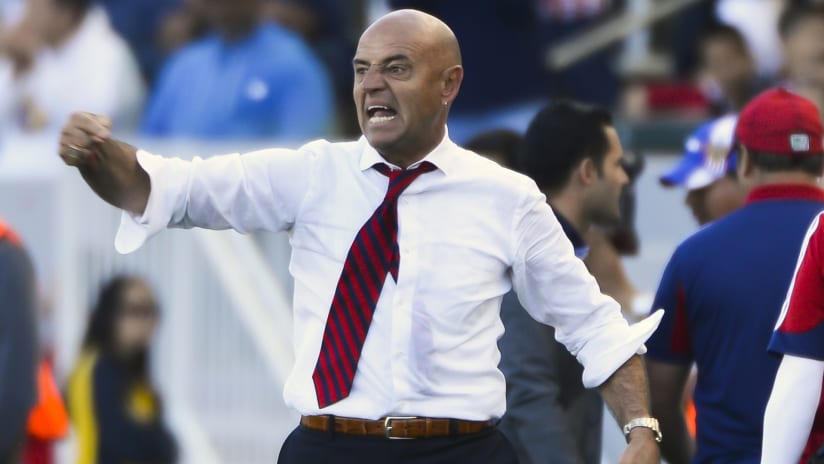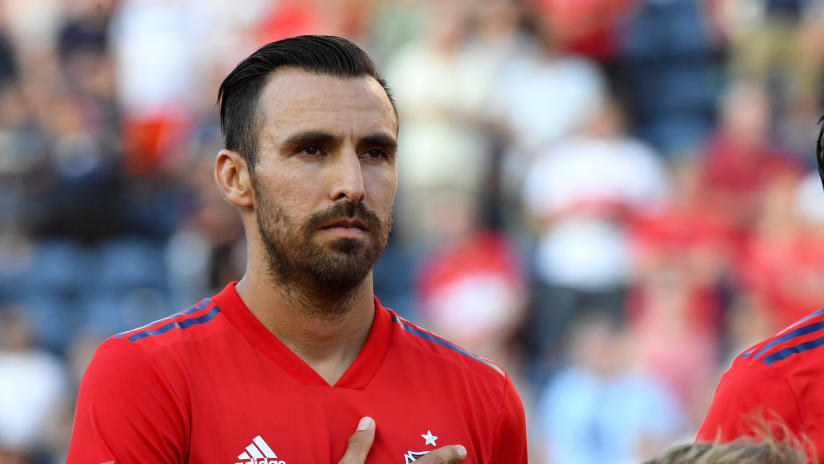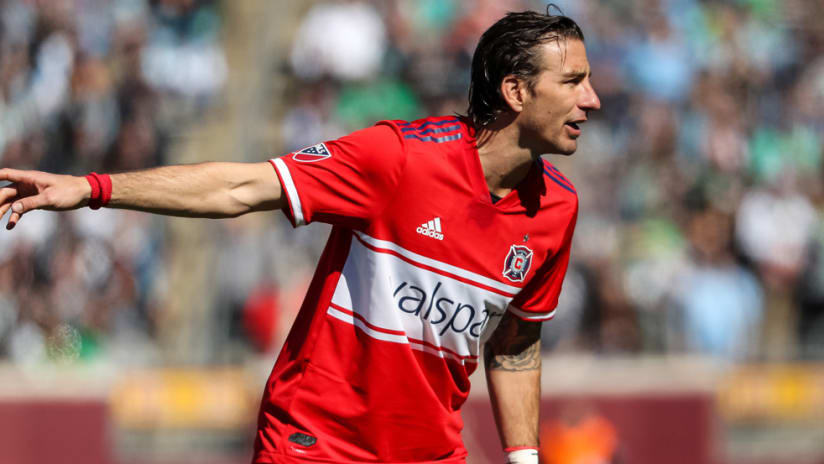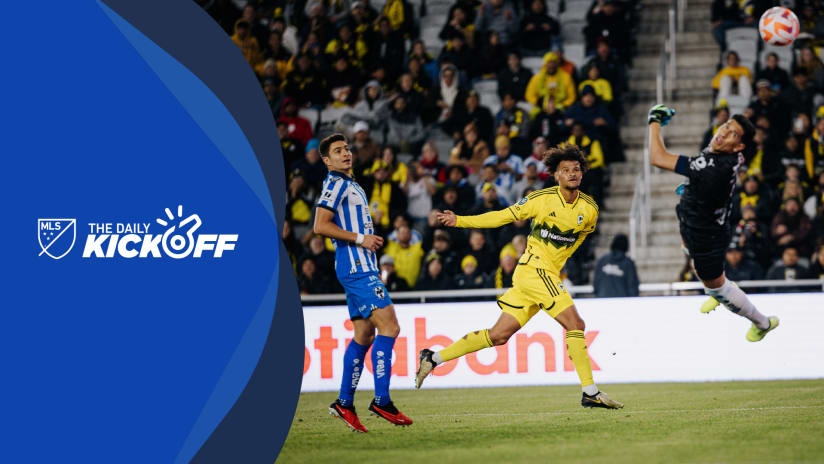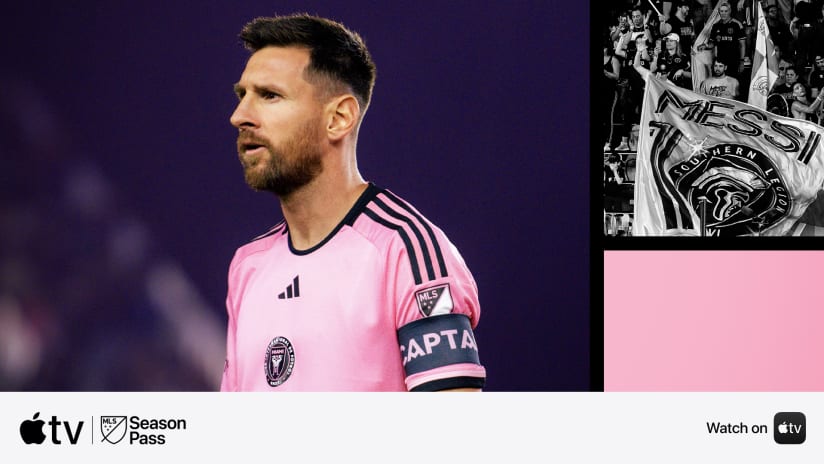There are five MLS representatives on Jurgen Klinsmann's US national team squad set to take on Jamaica this week and next. Two are goalkeepers. A third is a probable starting defensive midfielder. The fourth is a winger.
The fifth is Graham Zusi, Sporting KC's No. 8. Zusi, along with Pachuca's Jose Torres, is one of two players on Klinsmann's squad who plays as a "No. 8" – a ball-circulator who can move play efficiently from touchline to touchline, or endline to endline as circumstances dictate – for his club team. This is the Claudio Reyna role, or, if you want, the Xavi role.
Torres has been tried numerous times in the spot, and usually come up short (as he did against Mexico last month). Zusi has gotten less run there, but appears to still be in the mix.
Other No. 8s in MLS, however, are not. And that's a problem, as the US attack has shown signs of creeping rigidity even while the defense has become more and more stable. As Armchair Analyst Matt Doyle put it recently, "the midfield has too many piano carriers and no piano players."
Doyle's thesis is that Zusi – a fantastic player and worthy All-Star – surely isn't the only viable "piano-playing" midfielder that MLS can offer. And it appears he is right.
This week, Doyle has challenged me to take a closer look at some specific MLS players that also play this "piano-playing" position, and find one or two who could perhaps give Klinsmann's midfield the flexibility it's lacked. These players, alongside Zusi, include Michael Farfan, Beny Feilhaber, Brad Davis, Nick LaBrocca and Darlington Nagbe. (Liberia-born Nagbe is in the process of getting his US citizenship, though there is no official timeframe).
A few weeks ago, I introduced an elementary model for gaging the likelihood of a particular pass being completed based upon metrics such as distance and angle to goal. More recently, I introduced the concept of the "secondary pass" which aimed to quantify the likelihood of a subsequent pass being completed based upon who attempted the initial pass. This week, I am combining these two techniques in an attempt to tackle which players make their teammates better in the attacking third – i.e., who best plays the role of the No. 8:
Name |
qualityAdded |
passes |
Darlington Nagbe |
0.103 |
355 |
Nick LaBrocca |
0.054 |
357 |
Brad Davis |
0.051 |
665 |
Graham Zusi |
0.038 |
666 |
Benny Feilhaber |
0.003 |
475 |
Michael Farfan |
0.001 |
454 |
This table shows our six "piano-playing" midfielders ranked by the average amount of "quality" they add to each of their passes attempted in the final third. This is calculated by looking at the relative difficulty of each of their passes and rewarding appropriately based upon my model. For example, if a player completed a pass that had a 70 percent chance of being completed, they would have "added" the remaining 30 percent quality to that pass. Conversely, if a player misplaces a pass that should be completed 50 percent of the time, they added -50 percent quality to that pass.
READ: Central Winger archive
Nagbe, on average, added 10 percent quality to each of his attempted passes – easily the best out of our subset of attacking midfielders and among the very top in the entire league. Farfan, on the other hand, completes passes at the same rate that an average MLS midfielder would be expected to. Feilhaber is down there as well, while Zusi's score is middling.
However, as explained in my previous post, looking at pass completion rates – even when controlling for pass difficulty – doesn't tell the whole story.
Name |
qualityAdded |
2nd passes |
Brad Davis |
0.058 |
298 |
Nick LaBrocca |
0.051 |
160 |
Benny Feilhaber |
0.024 |
186 |
Michael Farfan |
0.024 |
165 |
Graham Zusi |
0.010 |
215 |
Darlington Nagbe |
-0.007 |
198 |
This table shows the same "quality added" metric, but only for a player's secondary passes. In other words, this measures – imperfectly, of course – who puts their teammates in the best spot to succeed. Who does the job of the No. 8, making everyone around them better? Who plays the piano?
While Nagbe has the highest quality added for his initial pass, his secondary passes complete at a lower rate than what would be expected of an average MLS midfielder. So he's completing incredibly difficult passes, but his teammates are not benefiting from them. (This may be their own fault. I bet a lot of Portland fans are nodding right now.)
Davis' teammates, on the other hand, are completing passes at a much higher rate than otherwise would have been expected. Simply: Brad Davis is making his teammates better. He's playing the piano.
If we were to combine the quality added on both the first and the second pass, it would suggest that Davis is ready to don the red and white hoops of Klinsmann's side – and I would agree. But, I'm hesitant to combine these two measurements because completing the first pass is intuitively more important than completing the second pass – and it's unclear how to weight the first pass against the second pass (or the third or fourth pass, etc.). The data is, as yet, imperfect.
But it's useful. Previously, during his interview for MLS' Numerology week, Analyst Rui Xu of Sporting KC cited scheme-fit/synergy as the most under-valued player characteristic in MLS. Quality added on secondary passes is far from even an acceptable proxy for an all-encompassing synergy metric, but it seems to be a small step in that direction.



